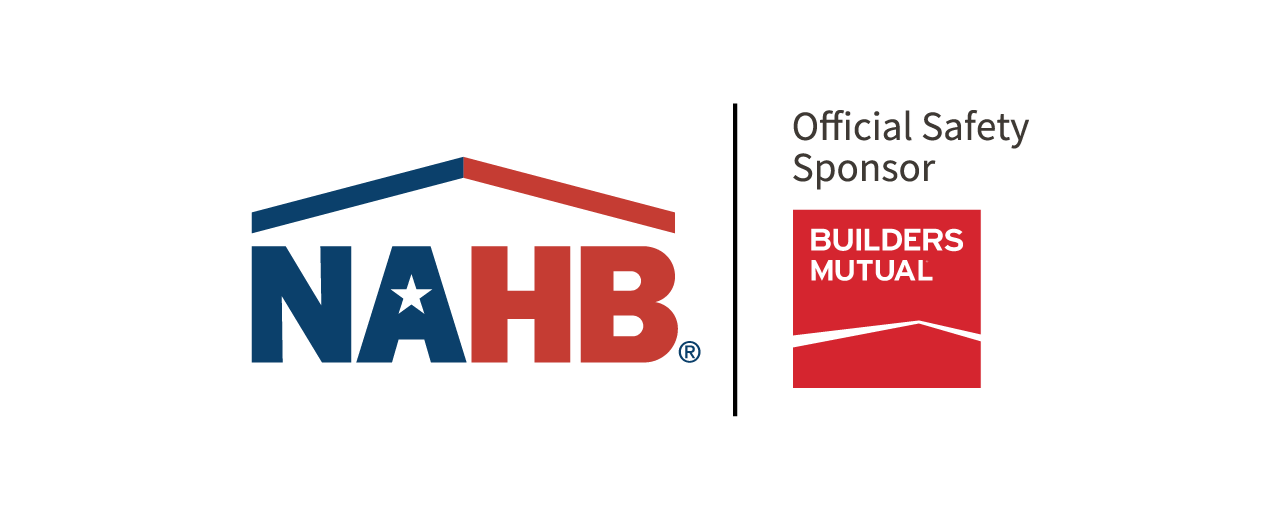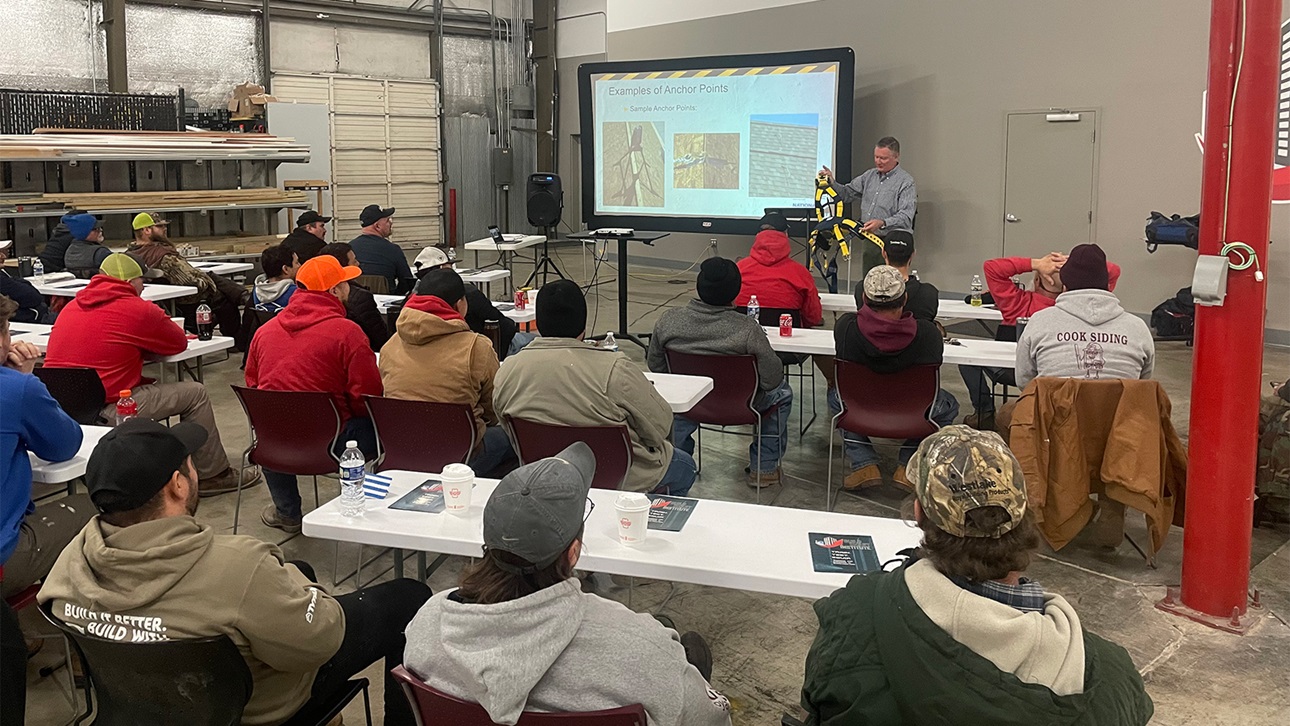NAHB Rolls Out HBA-Based Fall Safety Training
Late last month, NAHB conducted its first in-person fall prevention training class as part of a new pilot program. In partnership with the National Housing Endowment (NHE) and Job-Site Safety Institute (JSI), NAHB’s pilot program is focused on providing comprehensive fall safety training at no cost to NAHB’s state and local home builders associations (HBAs).
The first training was held at the Build Smart Institute in Roanoke, Va., for the Roanoke Regional HBA. Approximately 45 registrants attended the class, which included builders, contractors and remodelers.
The four-hour course, developed by NAHB and JSI, covers a wide range of fall safety issues that arise on home building sites, including:
- Ladder safety
- Scaffolds
- Conventional fall protection systems such as Personal Fall Arrest System (PFAS), guardrails, and safety nets
- Additional fall protection systems such as handrails and stair rails, floor hole covers, and controlled access zones
- Fall rescue procedures
The course is designed to be facilitated by a trained instructor familiar with NAHB educational content. The Roanoke training was run by George Middleton, who demonstrated proper technique for wearing and using fall prevention safety equipment.
Participants were also given a written evaluation at the end of the course to ensure that knowledge, skills and attitudes were acceptably transmitted and that students possess the necessary ability to safely perform the tasks taught.
Falls are the leading cause of injuries in the construction industry, and fall protection issues are the leading OSHA violation for home builders. Understanding this, JSI awarded NAHB a grant last year to start the fall prevention training pilot, with support from the NHE.
NAHB will facilitate approximately 20 trainings for HBAs by the end of May 2025. Upon completion of the pilot program, NAHB will consider providing trainings for more HBAs and their membership. If your HBA is interested in scheduling a training, email Jared Culligan, NAHB’s safety program manager, at [email protected].

Latest from NAHBNow
Dec 19, 2025
2025 Census Survey Reminder: Help Us Advocate for Home BuildingMembers should have received an important reminder this week from NAHB to complete our 2025 Builder and Associate Member Census. Please take a few minutes to participate to help us develop education, advocacy and networking opportunities needed to help your business grow.
Dec 19, 2025
Ford Announces Big Savings for NAHB Members on 2026 Model Year VehiclesAs a flagship partner of the NAHB Member Savings Program, Ford Pro has announced significant savings on eligible 2026 model year vehicles — up to $5,500 off. The lineup includes popular options such as Broncos, F-150s, Super Duty pickups, and Transit vans.
Latest Economic News
Dec 19, 2025
Existing Home Sales Edge Higher in NovemberExisting home sales rose for the third consecutive month in November as lower mortgage rates continued to boost home sales, according to the National Association of Realtors (NAR). However, the increase remained modest as mortgage rates still stayed above 6% while down from recent highs. The weakening job market also weighed on buyer activity.
Dec 18, 2025
Lumber Capacity Lower Midway Through 2025Sawmill production has remained essentially flat over the past two years, according to the Federal Reserve G.17 Industrial Production report. This most recent data release contained an annual revision, which resulted in higher estimates for both production and capacity in U.S. sawmills.
Dec 18, 2025
Inflation Slows in November (with a Caveat)Inflation unexpectedly eased in November, according to the Bureau of Labor Statistics (BLS) latest report. This data release was originally scheduled for December 10 but was delayed due to the recent government shutdown.



